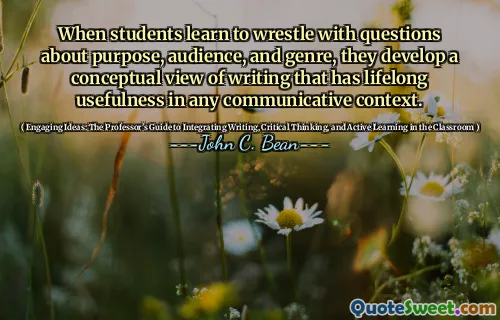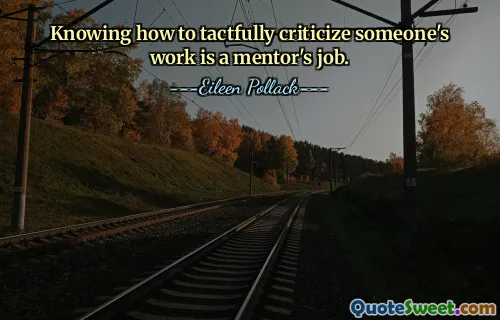
When students learn to wrestle with questions about purpose, audience, and genre, they develop a conceptual view of writing that has lifelong usefulness in any communicative context.
This quote by John C. Bean eloquently underscores the transformative power of teaching students to engage deeply with writing beyond mere grammar and structure. Wrestling with questions about purpose, audience, and genre cultivates critical thinking and adaptive skills that extend well beyond the classroom. Writing, in this context, is framed not just as a mechanical task but as an act of critical engagement that demands understanding why we communicate, to whom, and in what form. This process nurtures a conceptual framework for writing that becomes integral to a student's ability to communicate effectively throughout their life, regardless of the situation. From professional environments to personal storytelling, the fundamental awareness of these key elements enriches the clarity and impact of communication.
By emphasizing these aspects, educators promote active learning—a method that moves students from passive reception to active grappling with ideas. Such engagement enhances metacognition: students become aware of their writing choices and their communicative effects, fostering lifelong learning habits. The idea is that writing is not a static skill but a dynamic process shaped by context and purpose. This holistic approach prepares students to adjust their messages to different audiences and purposes, a vital capability in our rapidly changing, information-rich world.
In sum, this insight highlights the enduring value of teaching students to think critically about writing as a tool for purposeful and audience-aware communication. It transforms writing from a rote task into a meaningful, versatile skill, empowering individuals to navigate any communicative context with confidence and clarity.






